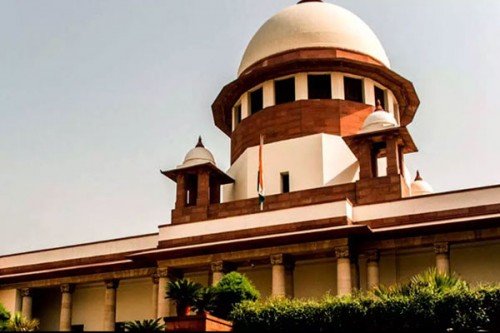SC summons Chief Secretaries of Punjab, Haryana over stubble burning

New Delhi, Oct 16 (IANS) The Supreme Court on Wednesday summoned the Chief Secretaries of Punjab and Haryana governments over non-compliance with the directions issued by the Commission for Air Quality Management (CAQM), a statutory body tasked with preparing strategies to curb air pollution in Delhi-NCR.
A bench headed by Justice Abhay S. Oka questioned why the states of Punjab and Haryana were reluctant to launch prosecution against violators and were collecting a “nominal amount of fines” for stubble burning.
“For the past three years, you have not prosecuted even a single person, only nominal fines were imposed. Nothing has been done,” remarked Justice Oka-led Bench.
The Bench, also comprising Justices Ahsanuddin Amanullah and AG Masih, was hearing a public interest litigation (PIL) relating to the control of air pollution in the national capital.
The apex court ordered the initiation of penal action against officials for not complying with the directions of CAQM.
The CAQM recently issued a directive empowering District Magistrates in Punjab, Haryana, and NCR areas of Uttar Pradesh and Rajasthan to prosecute officials for inaction on stubble burning enforcement.
In the previous hearing, the top court raised eyebrows over the collection of nominal compensation from farmers burning paddy stubble.
Noting that not a single prosecution case was launched over stubble burning, the Supreme Court pulled up CAQM for not making any efforts to implement its directions.
Earlier, the SC had said that the CAQM “needs to be more active” to combat the menace of air pollution in the national capital and adjoining areas.
It had said that “the Commission has not performed the way it was expected to perform, considering the object for which it was set up.”
“We are of the view that though the Commission has taken certain steps, the Commission needs to be more active. The Commission must ensure that its efforts and directions issued actually translate into reducing the problem of pollution,” it had said.
The CAQM was set up in 2020 for air quality management in the National Capital Region (NCR) and adjoining areas for better coordination, research, identification, and resolution of problems surrounding the air quality index.
Every year, Delhi and the entire NCR have to bear the brunt of air pollution from October to December, mainly due to burning of crop residue.

|

|

